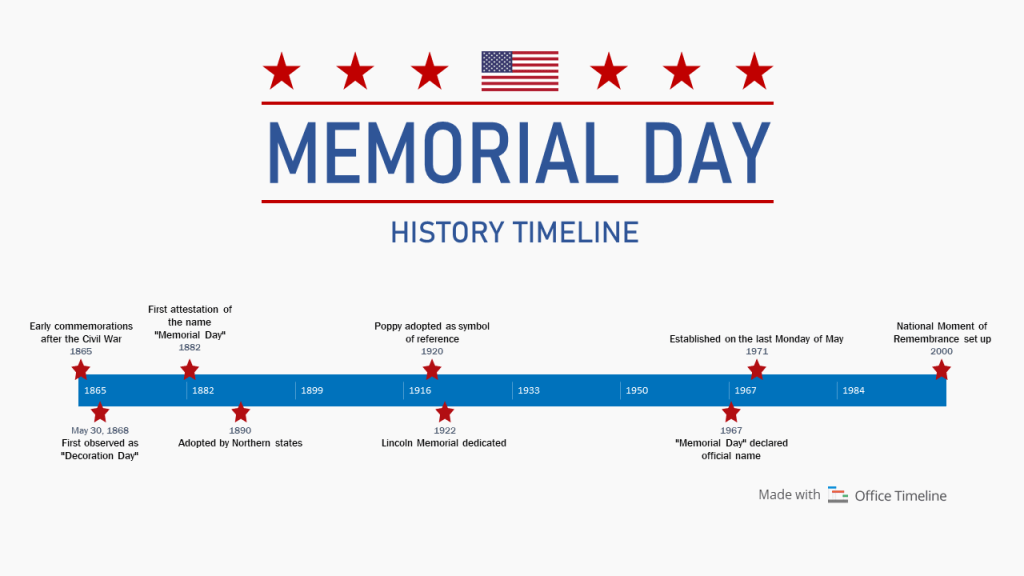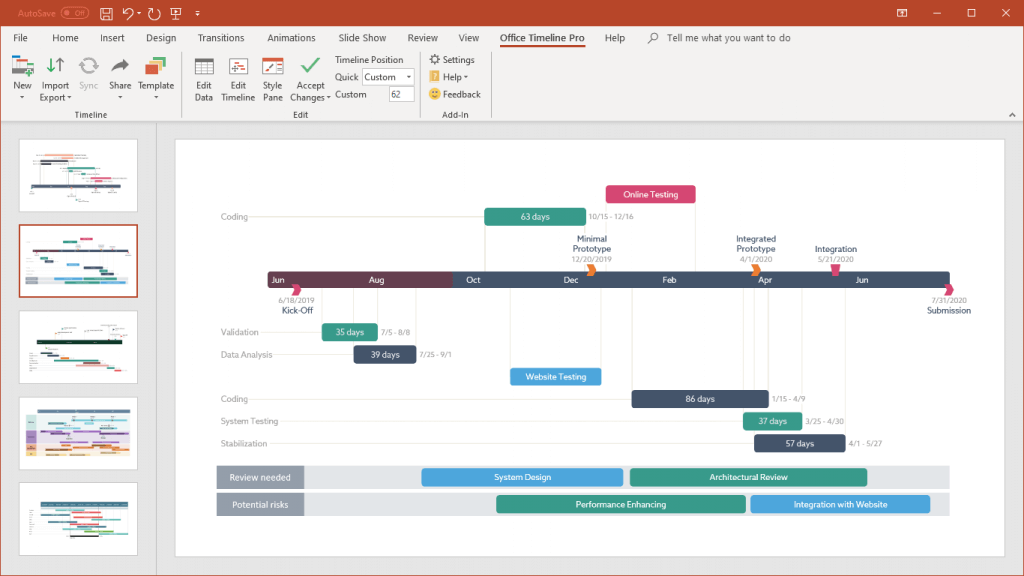The last Monday in May marks the US holiday called “Memorial Day”, when Americans take the day off to honor U.S. military personnel who have died while serving in the armed forces over the years. To commemorate the occasion, we have created a condensed visual timeline of the Memorial Day history and included some interesting facts about this holiday.

History of Memorial Day: a timeline
- 1865: Early commemorations after the Civil War
- 1868, May 30: First observed as “Decoration Day”
- 1882: First attestation of the name “Memorial Day”
- 1890: Adopted by Northern states
- 1920: Poppy adopted as symbol of reference
- 1922: Lincoln Memorial dedicated
- 1967: “Memorial Day” declared official name
- 1971: Established on the last Monday of May
- 2000: National Moment of Remembrance set up
FAQs about Memorial Day
To get all the information you need about Memorial Day, here are some answers to the most frequently asked questions about this popular US holiday.
Memorial Day is an official federal holiday in America, observed in the last Monday of May, which, together with the previous Saturday and Sunday, makes it into a three-day weekend. Its purpose is to commemorate soldiers who have died serving in the U.S. military.
The American people use the occasion to organize visits to cemeteries or memorials, parades, and family meetings. It also marks the unofficial beginning of summer in the United States.
Initially called “Decoration Day”, this holiday draws its origins in the 19th century, honoring those who lost their lives fighting in the American Civil War, which ended in 1865. The World Wars that shook the 20th century transformed this holiday into a day of remembrance for all fallen soldiers, and in the 1970s, with the start of the Vietnam War, it was expanded and recognized nationally.
There are disputes on when and where the first event was celebrated. But after the Civil War ended, in late springtime, there were ceremonies dedicated to the soldiers who had died, like a commemoration organized in 1865 by a group of former enslaved people in the city of Charleston, South Carolina.
Later, in 1868, War veteran Gen. John A. Logan called for a “Decoration Day”, which was celebrated on the 30th of May, and it became a tradition in the following years. In 1967, its name was officially changed to “Memorial Day”.
Memorial Day didn’t become a federal holiday until 1971, when the US Congress modified the original date of May 30th and established its observance on the last Monday of the month of May, therefore creating a three-day weekend for federal employees.
The Uniform Monday Holiday Act, which made this change, was actually passed in 1968 but it took a while before it went into effect.
Many American cities hold parades and ceremonies on Memorial Day, with the largest ones taking place in Chicago, New York and Washington, D.C. Other rituals include visits to cemeteries and placing US flags on soldiers’ graves or wearing a red poppy. Starting in 2000, all Americans are supposed to hold a National Moment of Remembrance at 3 pm.
On a lighter note, many Americans use the long weekend to take holidays, throw parties or organize family barbecues.
About the Memorial Day history timeline
The Memorial Day visual timeline was created using Office Timeline, a user-friendly timeline maker for PowerPoint that helps you visualize any sequence of events in a clear and easy-to-follow way.
Download the free edition that includes all the powerful features you need to create and update a timeline in minutes or get the free 14-day trial if you need to create more complex visuals with swimlanes and multiple time scales.
You can download this Memorial Day history timeline for PowerPoint for free and use it for your own purposes or modify manually it to include other key milestones.

Turn project data into professional timelines
Get the advanced features of Office Timeline Pro+ free for 14 days.
Get free trial